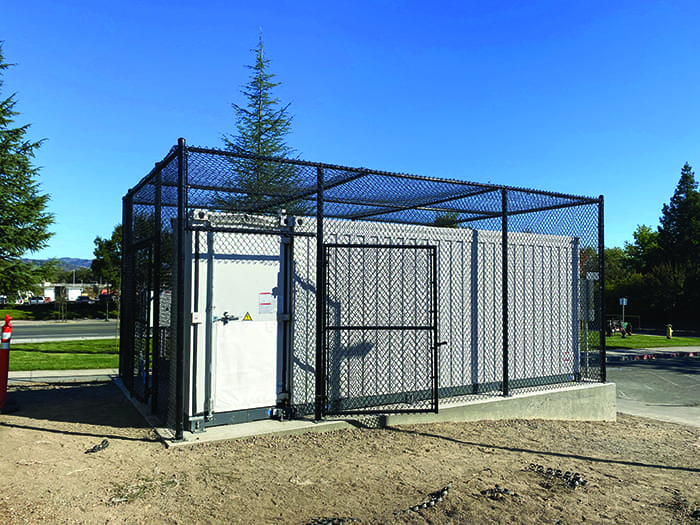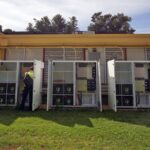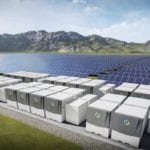Energy storage is becoming increasingly important in solar installations, and many renewable energy projects, including wind farms and others, are incorporating storage into their design.
Figuring out the value achieved by adding storage to a project may not be readily apparent at first glance, but for the right projects in the right locations, it can pay significant dividends to your operations over time. It’s important to determine not only whether the economics of adding storage to a project makes sense, but also whether the operations and maintenance of a solar array or other renewable energy project will be impacted by adding a storage mechanism.
Is adding storage worth the upfront investment? When large consumers “go solar,” it’s typically through a power purchase agreement (PPA) that comes in the form of a dollar-per-kilowatt-hour rate. When you’re financing storage along with solar, that increases the total amount of capital you have to expend, and because the storage is replenished by the solar solution, it will erode some of the kWh the solution produces. Explained that way, it seems like you’re paying more for less.
But while storage might add to the initial cost of a solar solution, it allows heavy energy consumers to address a greater percentage of their electricity costs. With just a solar solution, you might be able to offset 60% of your bill—the volumetric charges. Storage allows you to potentially address another 35%, which is based on capacity and demand charges.
Thus, while the overall cost of the solar and storage system is higher, the aggregate cost of the system and the charges from the incumbent utility are lower, providing a net benefit. Larger energy consumers are charged for both the kWh they consume, as well as the maximum amount of energy they need available at any time. Storage enables the system to lower the cost of peak demand by storing energy at off-peak times when it’s cheaper, and dispatching it during peak times when it’s worth more, often saving on both peak energy and maximum demand costs simultaneously.
Calculating the Cost Savings
Measuring the value of storage is a bit more complex than showing the value of a solar array. Rather than showing generation from a single meter (as you do with solar), you need to triangulate the meters on the solar and storage project with the utility meter to recreate what electricity costs would have been in the absence of storage. The value is in subtracting the costs of status quo operation from your electric bill.
Finding historical data to estimate savings ahead of time can be challenging. It’s easy to see on a bill how many kWh a facility used over a year, but with storage, you need all the data over 15-minute intervals. While this data is becoming increasingly more accessible, it can still be tough to collect efficiently.
Fortunately, there are software platforms that digest data from 3,000 different utilities. This allows your partner to analyze the potential value of storage, and propose a certain system size. It all rides on the shape of the load and how much potential value storage can add based on your peaks in usage.
Location plays a major role in the value of storage. In areas with utilities that use dynamic, variable time-of-use energy and demand rates, and especially in areas with a combination of incentives and regulatory policies that favor storage, it can deliver a lot of value. California has led the way in terms of incentive and policy programs that have since made their way to New York, Massachusetts, and other states.
 |
|
1. This 250-kW/500-kWh Samsung Sungrow energy storage system was installed by Distributed Solar Development at Windsor High School in Windsor, California. Courtesy: Distributed Solar Development |
In California, there has been strong demand for storage solutions from school districts (Figure 1), which needed a way to cover that extra 35% of their energy bill for demand charges. While the volumetric charges were growing at 2% to 3% annually, demand charges were escalating at 10% in recent years. So, not only was it a huge residual cost, it was likely costs would continue to grow swiftly over time. Adding a storage solution to save money now, while also hedging against future utility costs, which historically go in one direction, was common sense.
While the value of storage depends on a number of factors, schools are one type of facility whose energy usage falls into patterns that make storage a viable addition. A fast way to rapidly determine a good candidate for storage is to divide the total kWh used by the highest usage to get a sense of the load factor, calculable from a monthly electric bill. With more granular interval data, the value can be honed more precisely, and visualized in outputs such as graphs, to show the peaks and valleys throughout the day.
Load Curves and Peak Shaving
For a combined solar and storage project, we also integrate the timing of our projected solar generation, which can make the load curve choppier, because the energy needs to be used as soon as it’s produced. With storage projects, you can shape the curve any way you’d like. For example, you may want to shape the curve in a way that mitigates prevailing utility tariffs now, and in the future, while also capturing rapidly growing revenue opportunities for storage.
Schools and office buildings have discrete operating hours and predictable patterns, so their load profile typically looks like a sine wave. At a school, there might be a spike in the morning when students arrive. By discharging stored energy in the morning before solar generation, you can level out that spike, then recharge the battery during the middle of day to prepare for the next morning, or to capture arbitrage opportunities.
In an office building or a big box store, for example, you might have spikes at the start and end of the day, with heating, ventilation, and air conditioning ramping up or elevators running as employees or customers arrive and depart buildings. In this case, the load profile might look more like a suspension bridge with two peaks and a lull in the middle. With storage, you can flatten the towers of that bridge.
On the flip side, if you have a manufacturing facility that’s more or less running around the clock, it’s difficult to predict the peak and flatten it with a two- or four-hour battery. It’s like playing whack-a-mole. On a sunny day, you could have a peak at 3 p.m. when the air conditioning starts cranking. You might be able to reduce that peak from 3 p.m. to 5 p.m., but when the battery runs out of juice at 5 p.m., that becomes the new spike if operations persist for an extended period, such as in manufacturing operations working three shifts each day.
Storage makes the most sense when your facility has a limited time period when electricity usage is high—a limited load factor—and when you’re pursuing a solar-plus-storage project, which allows you to apply the federal investment tax credit. Tax equity financiers also can help bridge gaps, as they typically have a more-efficient cost of capital than alternate financing vehicles, enabling a lower cost for storage services.
There are a number of considerations around the value of storage, from your energy consumption to your utility’s capacity and demand charges to your state’s incentives and regulations. When the right factors align, storage can be a valuable addition to a solar solution, helping from both an operational and economic standpoint.
—Matt Kaufmann is senior director of Energy Storage Solutions at Distributed Solar Development (DSD).










